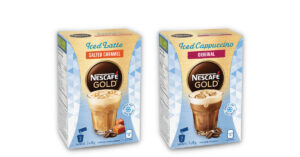
Nescafé Gold Iced Product Sampling Campaign
Introduction
Nescafé, a prominent coffee brand, sought to introduce its new offerings, Nescafé Gold Iced Cappuccino and Iced Salted Caramel Latte, to the market. The target demographic for this campaign was the discerning population of 25-34-year-old professionals known for their perfectionist tendencies. The objective was to execute a strategic product sampling campaign in office environments, gathering valuable consumer feedback and assessing the potential market demand for these new coffee sachets.
Campaign Details & Results
The product sampling campaign was conducted across three provinces in Canada: Ontario, British Columbia, and Alberta. A significant distribution of 1,190,440 product samples was carried out, with careful consideration given to offices with the highest concentration of 25-34-year-old perfectionists. The campaign successfully engaged with 2,192 companies, allowing the products to reach a substantial consumer base.
Consumer Engagement and Feedback: The campaign’s success was exemplified by the high consumer engagement rate. A notable 15.14% of the participants, totalling 180,232 individuals, diligently completed the post-campaign questionnaire. This comprehensive approach provided Nescafé with invaluable insights into consumer preferences and perceptions surrounding their new coffee sachets.
Consumer Purchase Intent: The feedback received from participants showcased promising results. An impressive 85% of consumers who provided feedback expressed a strong inclination to purchase the products. With a price point set at $6 for a 7-pack, this overwhelmingly positive response indicated substantial potential for sales. Based on participants’ expressed purchase intent, this campaign had the capacity to generate nearly $1 million in sales for Nescafé.
Qualitative Analysis for Future Product Releases: The results of the campaign not only provided valuable quantitative data but also facilitated an in-depth qualitative analysis that will significantly impact future product releases. The feedback gathered covered a wide range of critical aspects, including product attributes, packaging, product usage and usability, taste, texture, and comparisons with competitors. This qualitative analysis enabled Nescafé to gain profound insights into consumer preferences, identify areas for improvement, and discern how their products stacked up against the competition. Such knowledge will empower Nescafé to refine their offerings and enhance their competitive edge in the market.

Key Statistics
All the facts
Benefits of Coffee Sampling in Office Environments
By strategically targeting office environments, Nescafé benefited from several advantages inherent to product sampling campaigns. The workplace setting facilitated exposure to the intended target audience during their daily routines, fostering familiarity and convenience. Furthermore, the inherent social dynamics within office spaces allowed for organic word-of-mouth promotion and facilitated discussions surrounding the sampled products. This amplified brand awareness, created a buzz among professionals, and laid the foundation for potential future sales.
Conclusion
The Nescafé Gold Iced Cappuccino and Iced Salted Caramel Latte product sampling campaign targeting discerning professionals yielded remarkable results. Through the distribution of 1,190,440 samples across Ontario, British Columbia, and Alberta, engagement was achieved with 2,192 participating companies. The campaign’s success was evident in the 15.14% consumer engagement rate, with 180,232 participants completing the post-campaign questionnaire. The overwhelmingly positive feedback, with 85% of respondents expressing a strong intent to purchase, demonstrated substantial market demand. This campaign generated invaluable quantitative and qualitative data, enabling Nescafé to make informed decisions for future product releases and potentially generate significant sales. By leveraging the benefits of sampling coffee sachets in office environments, Nescafé successfully garnered exposure, facilitated organic promotion, and obtained critical insights that will shape their future success in the competitive coffee market.
Campaign Images
Image Gallery






